
What Sets Serial Entrepreneurs Apart?
How four entrepreneurs with a taste for creating, solving problems and disrupting keep on pursuing new and engaging horizons following the sale of their company.
By Claire Harbour and Antoine Tirard
More and more professionals, from young graduates to experienced corporate executives are gravitating towards the allure of creating, buying or leading startups, and this trend has accelerated with the global pandemic. Most of the time, these businesses either fail or an exit is made before their founders move on, many of them to their next venture. This doesn’t mean that all first-time founders will go on to become “serial entrepreneurs” for the rest of their work life. Yet we were intrigued by the growing body of research which supports the idea that repeat founders are more successful, in many ways, than first-time founders. We wondered why on earth a creator would want to undergo the same risk – and probably the same pain –- of growing a new business following the sale or failure of a previous one? Is this about the excitement of creation? The frustration and boredom of leading something once it works and does not need much tweaking anymore? And why, then, would serial entrepreneurs achieve higher successes in their later ventures? Could we assume that a core skill of talented entrepreneurs is learning from their own successes and failures in order to achieve more with their next venture? To find out, we talked to four serial entrepreneurs of diverse nationalities, from completely different walks of life and circumstances. We wanted to understand their journeys, and to discover what we could distill from their stories, in the hope of informing, encouraging and supporting would-be entrepreneurs as they go.
Jingjin
Jingjin was raised by her grandparents in China in the 1980’s, while her parents were away working in Germany. She was bullied at school for being too loud, too dark-skinned and plain not fitting in. It was not until she demanded to go to school in Germany that she found her place. There, Jingjin found herself celebrated for being “tanned”, for having her own opinions, and for finding the courage to step away from the clichés about Asian students, becoming class captain and striding through life.
Under pressure to conform to Chinese norms about choice of study and career path, Jingjin took her first strategic decision. Knowing that she wanted “to be powerful”, she analyzed the context and concluded that if she were to be an industrial engineer, she would be operating in a tremendous minority, and thus likely to be able to stand out and be in demand. She was right. On graduation in 2011, every German manufacturer was knocking on her door. She joined Siemens and rapidly pivoted into marketing, as she had hoped and planned.
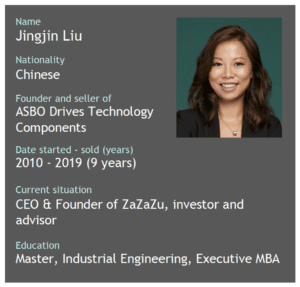
Her subsequent rise was meteoric and she became the youngest ever global marketing director at her second company, automotive parts company, Wabco. While she was doing so well, Jingjin didn’t have time to consider entrepreneurship. However, “sometimes chance finds its way to you”.
At an industrial fair, she met an illiterate Chinese self-made billionaire who saw a market for supplying automotive parts to the most rural parts of China. Jingjin was intrigued by his stories of how important it was to offer quality German parts to this market, and that the end of the supply chain would likely be “transport by cow!” She was convinced enough to give the matter some thought. She initially explored it with her own company and other producers but none of them were interested, due to the small numbers involved not meeting their minimum order quantities.
The Chinese man made it clear to Jingjin that money was no issue and he wanted to go into business with her. She was attracted by this creative entrepreneurial energy that emerged from the Chinese DIY approach. Starting out part-time seemed the most sensible option, and the pair were joined by a friend who was working at BCG, who took care of the financials. The roles were very clearly split between the three of them and they found harmony as they were each uniquely suited to their own roles. Jingjin was a perfect “bridge” and negotiator, while the Chinese investor saw to both big picture relationships and local logistics. One of her greatest challenges was to convince German suppliers to do business with companies that did not even possess a fax machine. But she relished the chance to be a pioneer and beat out new paths.
The venture soon hit a “cruising speed” and with just a few sales reps and themselves, they built a constant stable of six significant customers, and sales of about $6M annually. Jingjin describes this period as demanding, yet still compatible with her regular job as a corporate marketer. However, when she was promoted to the position of global marketing director at WABCO, she saw a huge contrast between her “superpower of dealing with people and catching the momentum” and her lesser ability or taste for managing people. This insight was one of the factors that contributed to her deciding to leave her corporate role in 2017.
With newfound time and energy, Jingjin pushed for further growth, but this was done without the solid foundations of truly understanding how to run a business in complex cultural waters. As the business shrank back to the equilibrium of $6M sales once more, the sweet spot was found, and Jingjin realized that if she wanted further growth and development, she would need to do an MBA. So, while struggling somewhat with losing the recognition of being a high flier from a large corporation, she decided, with her husband and newborn baby, to move to Singapore and attend the Executive MBA program at INSEAD. Her mind was on growing the business throughout Southeast Asia.
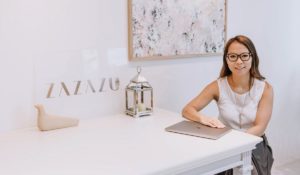
When approached by the China Machinery Engineering Corporation (CMEC), the startup was interested to engage in acquisition talks. It had turned out that expansion into Asia was not going to be so easy, and both sides found value in the deal. The acquisition proposed counted on JingJin staying in indefinitely, but she realized that she would not be happy in the large state-owned structure, having reveled in the agility of what they had built themselves. “All three of us founders were ready to move our energy on to other things, and although it lowered the purchase price, we agreed that I would stay inside the merged entity for only eight months”. Jingjin also understood that the mandate of the new company was becoming far removed from the initial notion of supplying the most remote customers, and it soon emerged that what CMEC were really after was a credible entry into the sphere of the German manufacturers. Jingjin saved what she could, by focusing on ensuring her staff were all taken care of whether happily staying or decently exiting. She had done her bit.
Without so much as a breathing space, Jingjin embarked on her next venture, this time far less serendipitous and more self-imagined, building on her desire to see more women’s empowerment, especially in Asia, which lags much of the rest of the world in this area. Remembering her superpowers of getting things done and dealing with people effectively, she founded a new company, ZaZaZu, the first personalized sexual wellness hub in Asia that synergizes education, curation of products and community to help women to own their sexual wellbeing. The startup has raised pre-seed funding from investors and wants to focus on proving and improving its concept for the Singapore market before eventually expanding to Vietnam, Hong Kong, Taiwan, Thailand, and China. Jingjin also spends time as an investor, board advisor and entrepreneur in residence at INSEAD. A serial entrepreneur who aims to build businesses that have a positive impact on the world, and still only in her thirties, she gives everything in her power to make things a success and takes each stage as a chance to learn, to develop and to enjoy.
Sébastien
Having grown up in a traditional military family in France, Sébastien did not find obvious role models to emulate as he made study and career choices, and certainly not any family history of entrepreneurship to follow. Certain that he did not see his future in the navy, he finally opted for an intended career in diplomacy, via the notoriously demanding “grandes écoles” system. Towards the end of his time at HEC, he met his future wife, who made it quite clear that she would never wish to be a diplomat’s wife, so he kept the girl and ditched the career goal.
Ending up in investment banking through a fortuitous on-campus interview with Paribas, he progressed to J.P. Morgan, but felt increasingly disturbed by the politics and in-fighting, especially at upper levels. This struck him as a terrible waste of resources, and he observed that “to survive here I have to be a shark. I don’t want to be even a polite shark, though I definitely don’t want to be the prey either”. He began to contemplate the possibility that there was a “third way”, that could lead to “building something great together”.

Meanwhile, around 1994, long before tech startups were the norm, he met the founders of French tech company, BusinessObjects, and fell under the spell. So convinced was he of their interest and value, he managed to bring them into the J.P. Morgan stable, advising on their flotation on NASDAQ. He was bewitched by this new world of “no limits, new solutions and venture capital”.
So Sébastien left J.P. Morgan, in the quest of getting closer to the tech world, and joined Montgomery Securities, one of the top investment banks dealing with small tech ventures. Friends and family struggled to comprehend why he would leave his secure role, but the 16-hour days and the 100+ business trips per year were “the price he needed to pay to be re-engineered from the plain vanilla investment banking guy to the smooth machine working in the fast-paced tech world.”
The painful transformation offered its dividends in the form of the courage required to set up a venture capital fund with two partners from extremely high-profile firms. The aim was to build a fund as “commando capitalists with a heart”, acting as proper partners to their portfolio companies. Add Partners raised €175M from top-tier institutional partners: the proposition was demonstrating its value. Much success emerged over the subsequent six years, with companies sold to the likes of Microsoft, Oracle and Bloomberg. Unfortunately, the partnership was unable to keep its equilibrium, and the philosophy of “heart” fell apart in some of the key players. To preserve his sanity, Sébastien negotiated an exit that was “decent, but far from the prospects I might have enjoyed. I left heartbroken, but with my mental health and integrity intact”.

At this stage, Sébastien and his family decided to return to Paris, and he was considering setting up a new fund. But he then realized it was finally time to become a full-on entrepreneur. It was time to enact the need he had always sensed to create something from scratch. He was about to burn his bridges at the age of 41, but he knew this was necessary.
“An entrepreneur is someone who sees and someone who does. The two together.”
After one quickly rejected venture, Sébastien was invited to join another, which looked more promising, only to be jilted once again, by his partner, who decided he no longer wanted to share. Thus started an all-time low: the phones were no longer ringing for jobs back in finance. His savings were dwindling, and he was going to the movies alone in the afternoons, trying to escape reality. From the embarrassing comfort of a velours bucket seat one afternoon, he began to confront his frustration and find inspiration.
Over the following few weeks, Sébastien built the beginnings of a company in the real estate business, an online platform for the best agents, “MeilleursAgents.com ». He assembled a team of experts and enthusiasts, and managed the venture according to “The Strategy of the Dolphin”, a book he had recently read, which provided the benign third way he had been seeking. Over the subsequent 12 years or so, they created a valuable enterprise, in which open, candid communication based on clear and solid values, drove everything. They built “flexible, high powered teams, and found a new way, one based on a finite world, in which all actions have a consequence, and where everybody wins”. From the outset, Sébastien was clear with his co-founders that the company’s purpose was to prove that the dolphin strategy could create a super-competitive, resilient, adaptive company, even in an industry renowned for its sharks, like real estate.
As Sébastien had begun to seek out equity investment to grow the business globally, he had met with the CEO of Axel Springer, Mathias Döpfner, who is renowned for his overt probity. Over a period of several years, the two were drawn to each other due to common values of transparency, candor and integrity, and became friendly through a shared interest in football, spending time getting to know one another, and just “being good guys”. When the offer to purchase the company came, it was “one we really could not refuse”, not only because of the sum involved, but thanks to the confidence the transition inspired in Sébastien and his team; they knew their cultural legacy would be respected and valued.
While Sébastien did not stay for long in the newly acquired entity, he has had the immense satisfaction of seeing his key players being prized for their behavior. His CFO (“a true dolphin”) was nominated CEO by the Springer group, and the whole acquired team is clearly being lined up for even greater roles across the world. The efficiency of this unique, human-centered approach is now fully demonstrated. He has kept close links with his co-founders, who have become his closest and most trusted friends.
The new venture is already in preparation, and Sébastien is hooked on the entrepreneurial life. He is coy about revealing more right now, but cannot resist the call of creating more ventures with a heart. Whatever happens next, Sébastien will no doubt follow his convictions. To the question ‘What’s in the mind of an entrepreneur?’, he offers this insightful response: “For me, the ultimate entrepreneur is Magellan: he sees the world in a certain way, and even though he does not have the proof that it is true, he has faith in his vision and empowers himself to make it come true. An entrepreneur is someone who sees and someone who does. The two together.”
Caroline
Caroline grew up in Northern Canada in a quirky family full of firsts and records, inventions and innovations. Her Australian father was the first person ever to make the overland crossing of the treacherous Darien Gap between North and South America. The family travelled for a good part of the year, never seeing obstacles or barriers. This made Caroline curious and courageous, though she did not fit in at school. The early signs of entrepreneurship were definitely all there. A place at McGill University at 15 to read Chemical Engineering was another achievement, but her mother decided to send her for a year to school in her native England, to “kill” time and allow the young girl to mature a little. A few years later she was still there, having been encouraged to try for and obtained a place at Oxford to read Law.
On graduation, Caroline perceived that Law was a backward-looking, compliance-driven affair, and she preferred “looking to the future and manifesting new stuff”. So, she decided to take her brain to management consulting, relishing the opportunity to travel and innovate on behalf of her clients. After an MBA at INSEAD, where she found “more people like her”, she joined a global FMCG company, as the first MBA hire ever. Wherever she went, on their behalf, she pushed frontiers, learning languages most would not bother with, staying calm in crises such as the Venezuela coup d’état, and spotting future trends in various businesses. This included the creation, in collaboration with prominent NGO’s and governments, of the Marine Stewardship Council, which still protects fish and the fishing industry. All this innovative activity had given her an unusually high standing in the company, especially for a woman, and she was showing no sign of slowing down when a strange event stopped her in her tracks.
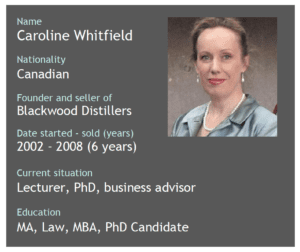
An administrative error in Germany around a hotel booking created an internal scandal. It looked, without verification, as though Caroline might have been having an affair with a senior director, which was not the case. Caroline was most upset for the director concerned, as he, like her, was guilty of nothing. But she was even more mortified, as now the gossip would be that she had “slept her way to the top” rather than advancing on merit as well as remaining faithful in her marriage. At this stage, she decided to leave, to another consumer goods company, without any great enthusiasm, as she had envisaged a much longer tenure where she had been.
For the next few years, Caroline became more and more involved with startups and the whole eco-system around creation of companies and value. She was building incubators in the City, working with Idealab out of California. She learnt all along the way, and received various pieces of pertinent feedback as she went. Idealab’s founder Bill Gross told her he saw her more as a business development person than a founder. Others told her she should be “going it alone”. Her attention was captured.
What happened next is the stuff of fairy tales, albeit of the darker type. During a crisis in her marriage, Caroline idly read an article about a run-down house on the Isle of Shetland in Scotland. Within three hours, her curiosity had led her to discover that it was the only Scottish isle that did not have its own whisky distillery. Two weeks later, she was “in a room with a bunch of people, and the Blackwood Distillery was created”, and given her husband’s name as a peace offering. The story was as compelling as the speed at which the business grew. Caroline created an innovative model, using quickly-produced, original, terroir-based, vintage white spirits sold at premium prices to create cashflow to fund the lengthy maturing of the whisky. It was a great and creative principle and bought them widespread commercial relationships in twenty plus markets worldwide. But the cashflow was not quite sufficient to keep things healthy, and this was the years building up to the crash of 2008. When a big squeeze came, and further financing was required, as a then fellow board director, her husband was dragged into negotiations for the loan, and the state of her marriage was questioned as part of due diligence before funds were to be released. The only way to ensure the funds was to state the position accurately, which was that they would be divorcing. She got the money, but her ex-husband viciously spread the story that she had “divorced him to get financing”, which hurt bitterly.
There had been an attempt at an MBO earlier on, and as the business faltered, some of the individuals involved showed up again. Complex politics played out, and Caroline, by her own admission, too naïve, did not manage to keep hold of things. So, the company was sold to UK/German group Blavod, with whom Caroline had been friendly for some time. She was embarrassed and ashamed, and would have preferred to “walk away and hide”, but she ensured first that all debts were settled, and that the way was laid for her colleagues and shareholders to set up other ventures. She walked away with nothing, sold her house and stopped for a moment.
Not for long, though, as in the years since Caroline sold Blackwood, she has tackled many an entrepreneurial challenge. She has bought, turned around and sold several smaller companies, “just because I could”; she has consulted and advised all manner of companies in Scotland and beyond, especially in the food and drink field. There was also a long period “out” to hunt down the right treatment for one of her daughters who was diagnosed as having an extremely rare brain tumor: “what is the point in being clever if you cannot save your own daughter?” And of late, she has been preparing a PhD, having been seduced by the crossover between academia and innovation. As we mused on what might come next, Caroline mentioned that a friend had asked her to join him in creating a new gin brand, and that she had just launched a property development venture with one of her daughters. She is also helping out on new ventures, particularly social enterprises or those with a socially beneficial mission. She is currently working on a digitally based community-owned air taxi business for a rural site. Like many entrepreneurs, Caroline is unafraid of constant reinvention.
William
William was born into a large farming family, constantly hearing: “who on earth would want to go on holiday, when you live in this rural paradise?” According to his mother, he could recite entire classes of botany before he could walk, and his attachment was deep-seated, though nothing much suggested that he would break the bounds of convention and set up his own company subsequently.
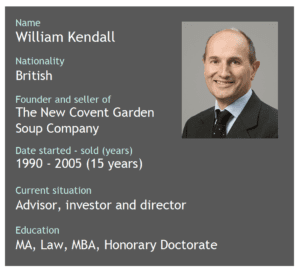
He chose to study Law at Cambridge, having concluded that there might not be a seat for him at the family business table. He especially loved the use of pragmatic first principles to find the best answer to any given question. He followed the traditional path, doing his pupillage and mixing with the higher echelons of the British judiciary, many of whom, or whose offspring, he had already encountered at university. An increasing realization emerged, however, that he was “not from their world” and never would be.
A brief interlude accidentally revealed his commercial skills while negotiating to acquire some port wine for his “pupil master”. William had been haggling, comparing and doing “what his father had always taught him when it came to trading”, and evoked a comment about his clear ability in this area. At the time, the comment stung, as it felt disparaging, implying that commerce was a lesser calling and, indirectly, that he might never truly fit in. But this gave rise to a period of reflection during which William determined to leave the Law, though not straight into “commerce”.
Tired of driving a beaten-up car, William targeted investment banking, to catch up in the earnings stakes. Armed with some strong self-awareness, he tackled a series of interviews, eventually choosing to work at Flemings. However, William did not enjoy the city much, compensating with a joyous social life, in London and on weekends at his girlfriend’s ancestral home in Suffolk, where he delighted in cooking vast quantities of food for guests, and avoiding thinking about stomach-lurching Monday mornings.
Disaster was narrowly averted when a friend strongly advised him against moving to a “comfortable but ultimately dull role” so further exploratory conversations happened with his tribe. The next one inspired William into investigating MBA’s and he chose INSEAD for the efficiency of its one-year program. What he was less prepared for, as his main ambition was “to wipe the slate clean” was how apparently driven his classmates were. Over time, the façades came down, but it was clear that he would not be joining the majority in the direction of the City – just what he was trying to escape.
Attracted by entrepreneurship throughout the course, and knowing his predilection for food, William followed up on the lead of a tiny entity called the Covent Garden Soup Company, whose very recent launch he had been vaguely aware of before INSEAD. A series of chance encounters, detective work, pursuits, blind alleys and missed rendez-vous ensued, but eventually William obtained a gig for just a month, as a consultant to the soup makers, who were “going bust”. This was on the strength that he would know where and how to buy good carrots at the right price.
Apax Partners had invested in the company, and as William rendered himself invaluable, they offered him the job of running it, replacing the initial founder. Suddenly he was playing with passion. Except, of course, he knew about buying carrots, and had some nascent MBA business skills, but also a great deal to learn. As he grew the company with a bunch of other eager, but not necessarily adequately competent under thirties, the chaos and energy were akin to “mini-rugby – everybody running around, with feverish excitement, piling on to the ball, and not thinking much about strategy.” But they made it, and the investors were indulgent enough to let them through, going from chaotic founders, to profitable business leaders over a period of about five years.
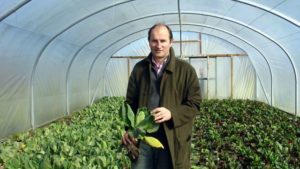
William describes some of the competencies he brought as “superficial skills”, which meant, for example, that if contracting with an ad agency, he could use the right vocabulary, though by contrast he used crucial skills in management accounting, digging deep to find the story behind the numbers. This appealed to his legal, problem-solving brain, as did the rigor required to stay the course of the company’s growth. Key was bringing in the experts in the technical and logistical side of the business, as this was the “ultimate fast-moving consumer good, with a shelf-life of only three days”. He received much support from the Chairman, who was, on the one hand, demanding of accurate, timely reports and communication, and on the other, supportive in moments of crisis, such as accidents or fires in the factories.
It became clear that it was time to exit, as profits were “acceptable” but the atmosphere with some of the shareholders was becoming difficult to manage. William had transitioned almost too comfortably into the role of a leader, often actually managing to read the newspaper on his desk every day, whereas previously that had been an impossible feat. But he was bored, too. And so Apax Partners was flattered when William managed to persuade Goldman Sachs to advise them “on its smallest deal ever!”. Six months later, the company was purchased by Daniels, a larger food group in the UK. William and his partners managed to make a peaceful agreement to create a slow, smooth transition.
Loyalties were stretched, the time seemed interminable, but they got out with reputations and pocketbooks intact. And, despite the adventures along the way, William still says that CGSC “was the best thing ever!” But it was definitely the right time to get out.
Did he do it again? He certainly did, several times. William then discovered an embryonic chocolate brand called Green & Black’s which he built into an international brand. Green & Blacks was the first product to carry the Fair Trade mark in the UK, and is one of the most notable Fair Trade successes to date. It was sold to Cadbury Schweppes in 2006. William now runs or invests in growing businesses with an emphasis on product provenance. Amongst others he is chairman of the Cawston Press and LA Brewery. He will never stop. His advice to young wannabee entrepreneurs is “Do it when you have poor due diligence skills, where the stakes are high and you have no liabilities. That is the perfect competitive advantage you can find, in whatever market you enter.”
Once an entrepreneur, always an entrepreneur
Whatever the motivation, whatever the model, what we can clearly see is that “once an entrepreneur, always an entrepreneur”. Our subjects got a taste for creating, for solving problems, for innovating, and, when they were done with that initial exciting phase of building, they got out, and keep on pursuing new and ever more free but engaging horizons.
Is there a clear signaling mechanism that shows us from early on who will be an entrepreneur, and who will keep within the bounds of corporate life? Perhaps, but in our little group, at least half of them showed no great tendencies towards the path less travelled in their early life, though all of them had a sort of “not fitting in” either in life or in social contexts, whether school, company or network.
What happened next to all of them was that they then got hooked as they went in and did the entrepreneurial thing, whether by design or by stumbling. This makes it possible that anyone who finds the impetus to try it can give it a go: maybe you don’t need the genetic markers to get permission! But if you do indeed try entrepreneurship once, you need to understand you are probably in it for the long haul.
What 10 markers for serial entrepreneurship look like
1 – Unusually unwilling to be satisfied by old solutions, constantly seeking out new approaches
2 – Taste for projects that have a clear beginning, middle and end
3 – Career and personal agility –- easily leaping from one status to another
4 – Low threshold for boredom
5 – Pronounced thirst for learning, experimentation, and “just doing it”
6 – Marked sense of not fitting in and a desire to break out
7 – Eyes open to opportunities to change, to be different, to do what others might not dare
8 – Clarity about how business-building skills can work over and over
9 – Sheer grit and calm in a crisis outweigh knowledge of how to buy carrots or assemble gin botanicals, for example
10 – Constant energy for the next, the new and the novel, which allows obstacles to be overcome
Download a printable copy of this article here.
Sign up
Sign up to receive regular insightful news and advice on managing your career and receive a free gift. Inspiration delivered straight to your Inbox!
